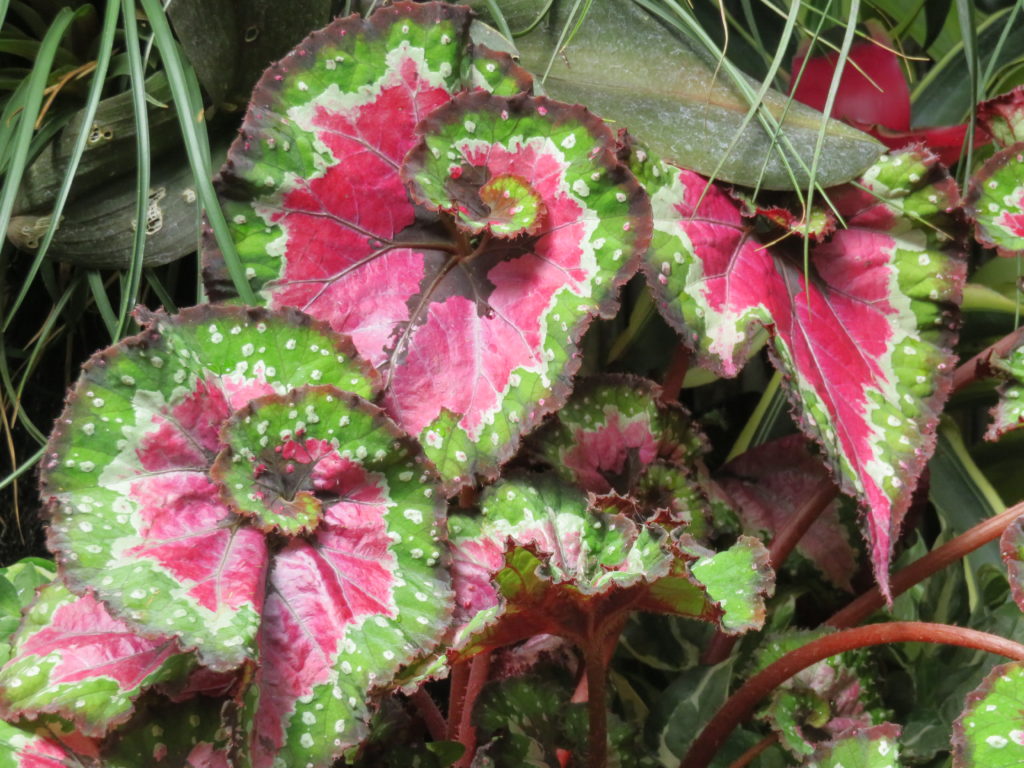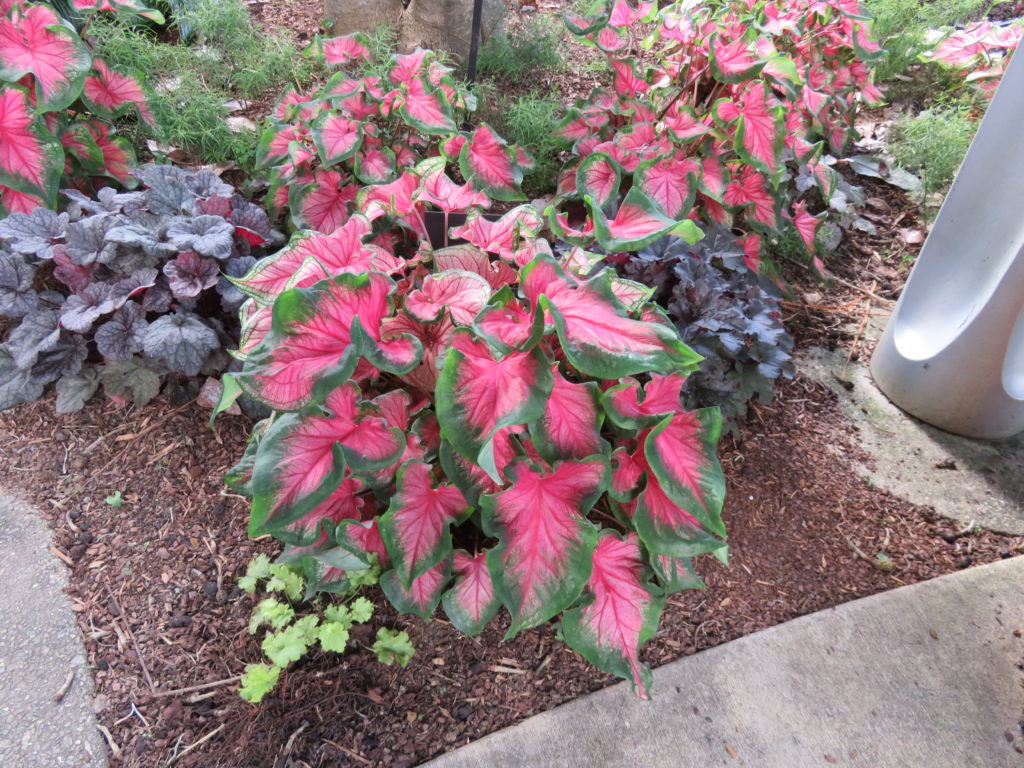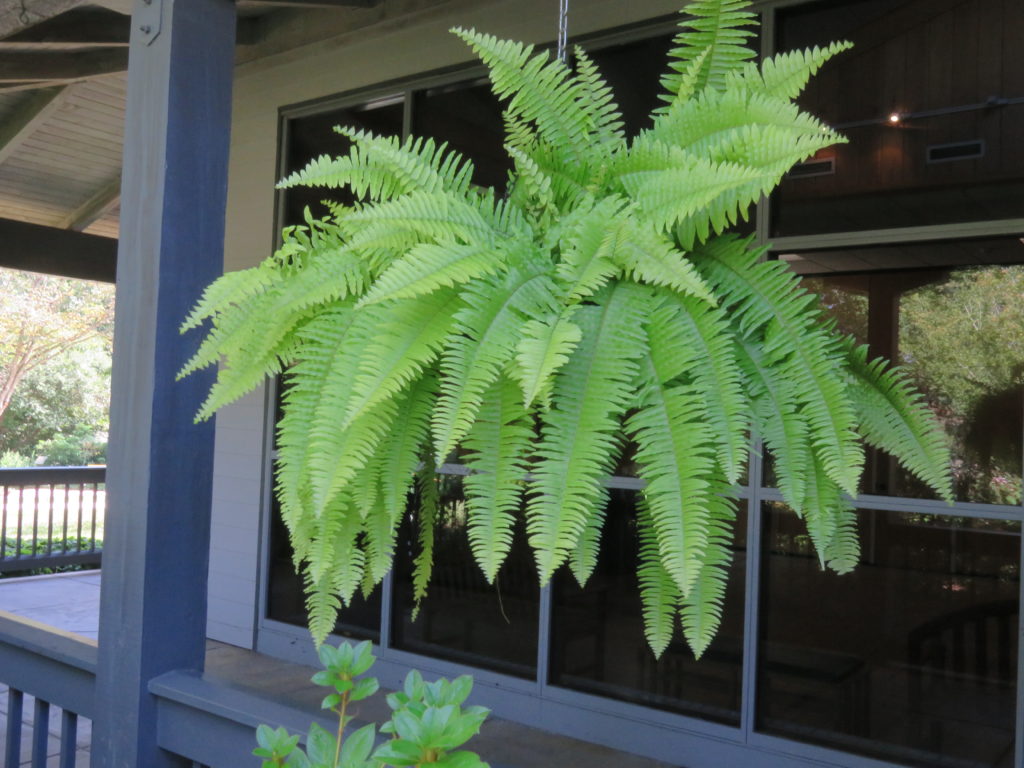
1. Coleus (Solenostemon) are known for their colorful foliage in containers around trees or shrubs. For shady areas select the Kong Mosaic™ or Wizard™ series.
2. Begonias, as a group, represent lots of variety series. Most garden begonia varieties should do well in beds, planters and pots. Begonia types like the Rex and Angel Wing are grown primarily for colorful foliage and, secondarily, for flowers.
3. Impatiens are not just for shady garden spots anymore. Choose hybrid disease resistant cultivars of Sunpatiens, New Guinea, and Beacon™ series. Impatiens offer showy, season-long blooms and perform best in partly sunny to partially shaded areas.

4. Caladium are non-hardy tubers; they are often started indoors in late winter to extend their outdoor seasonal performance. They are grown for their colorful tropical foliage which brightens up shady areas.
5. Fuchsias are readily identifiable by their drooping, brightly colored flowers that bloom most in spring, late summer, and early fall. Summer heat slows down blooming. Select the trailing forms which offer better performance in flower beds or hanging baskets.
6. Wishbone flower (Torenia fournieri) bloom from late spring into early autumn. Summer Wave® series is the current favorite with heat tolerance and hold up to occasionally dry soils. Plants grow 6 – 10 inches tall and trail 24 – 30 inches wide.

7. Boston fern (Nephrolepis exaltata) are excellent shade plants, traditionally planted in hanging baskets and window boxes. Asparagus fern (Asparagus springeri) is also nice addition to a shady spot.
All seven shade annuals look great in the front of landscape beds or in large patio containers and hanging baskets. Plants are set out in spring when threats of frost have left your area. All prefer moist fertile soil garden soil and partial shade. They perform in summer heat and humidity and underperform in deep shade.

 Posted in
Posted in 
